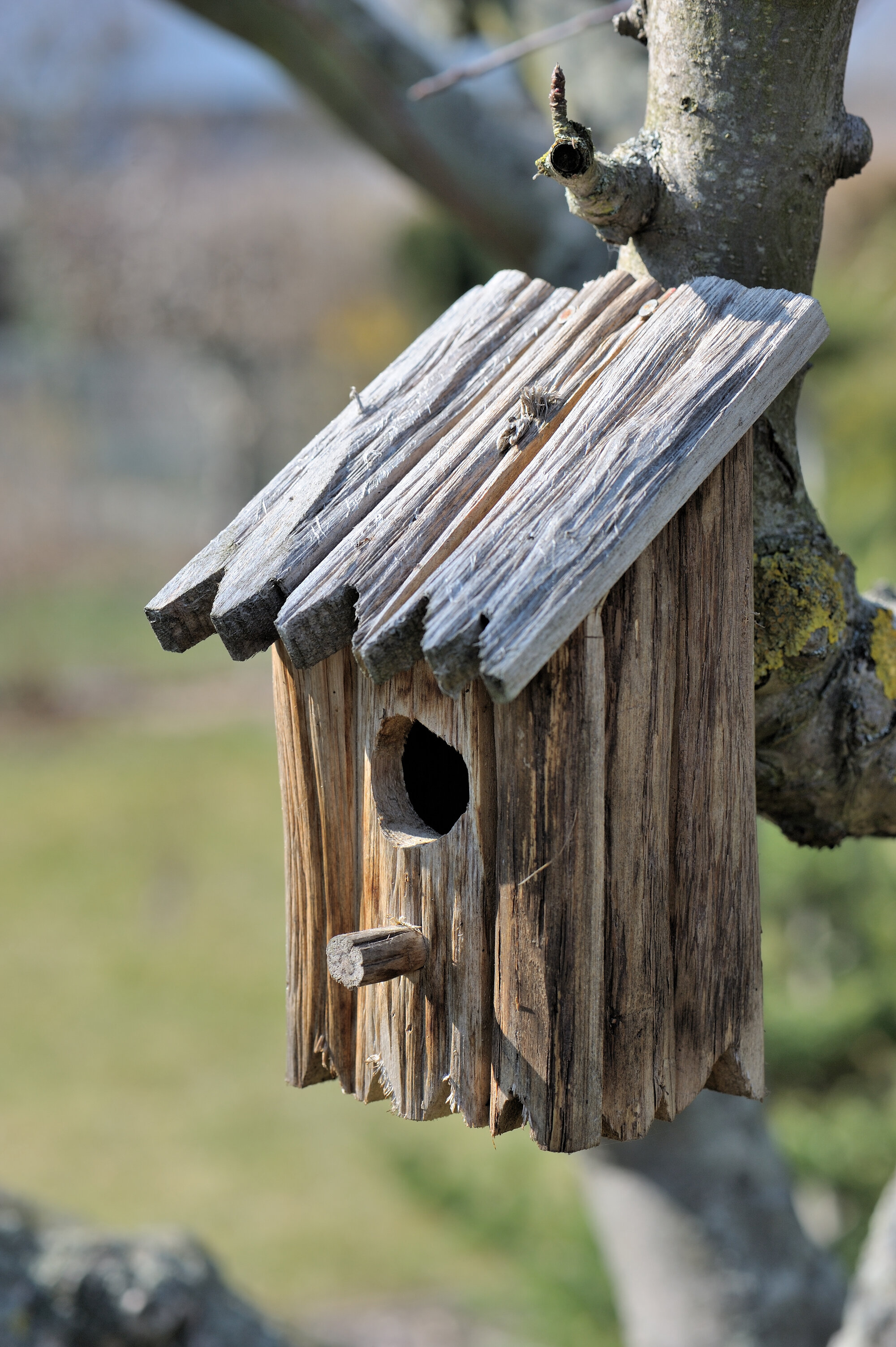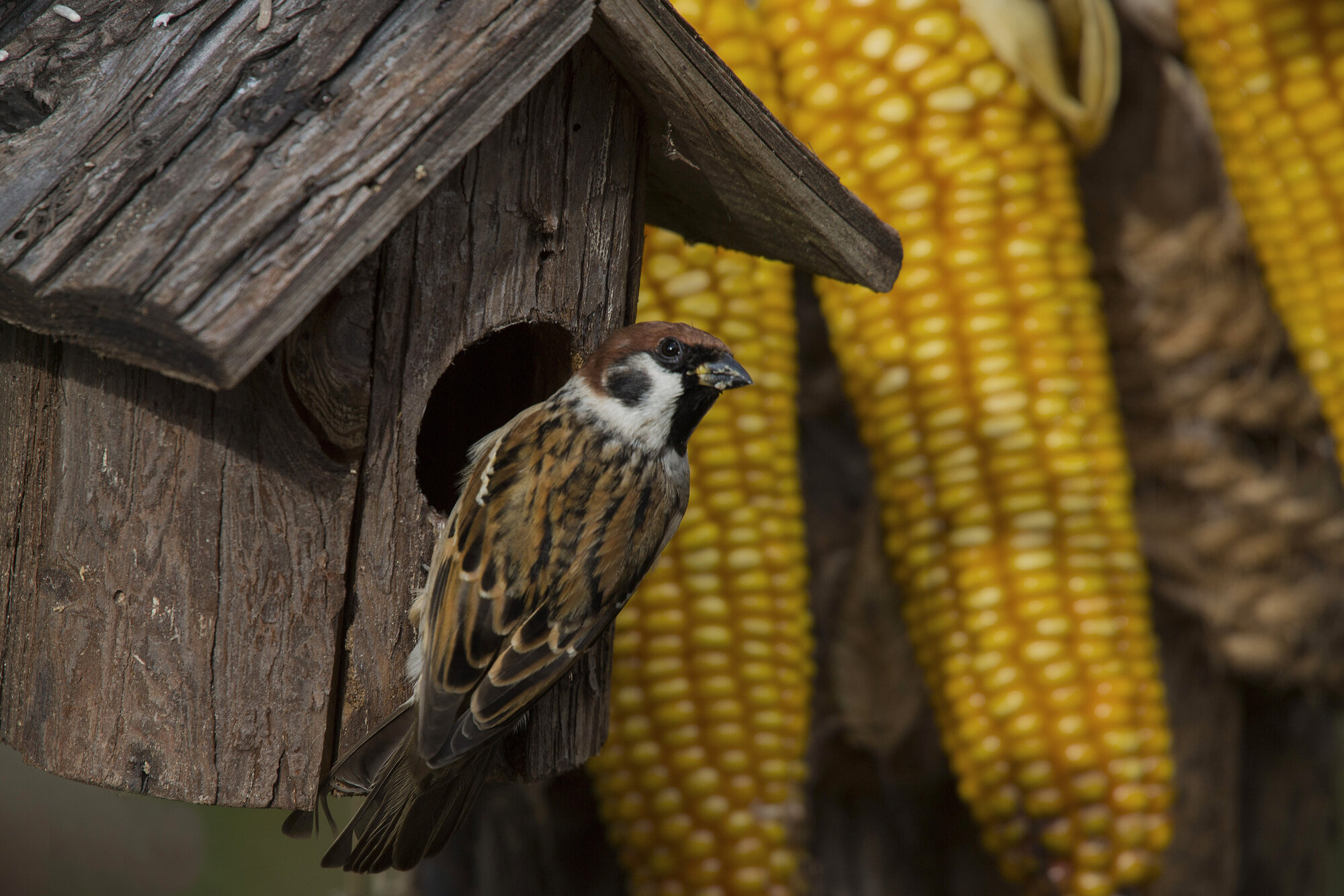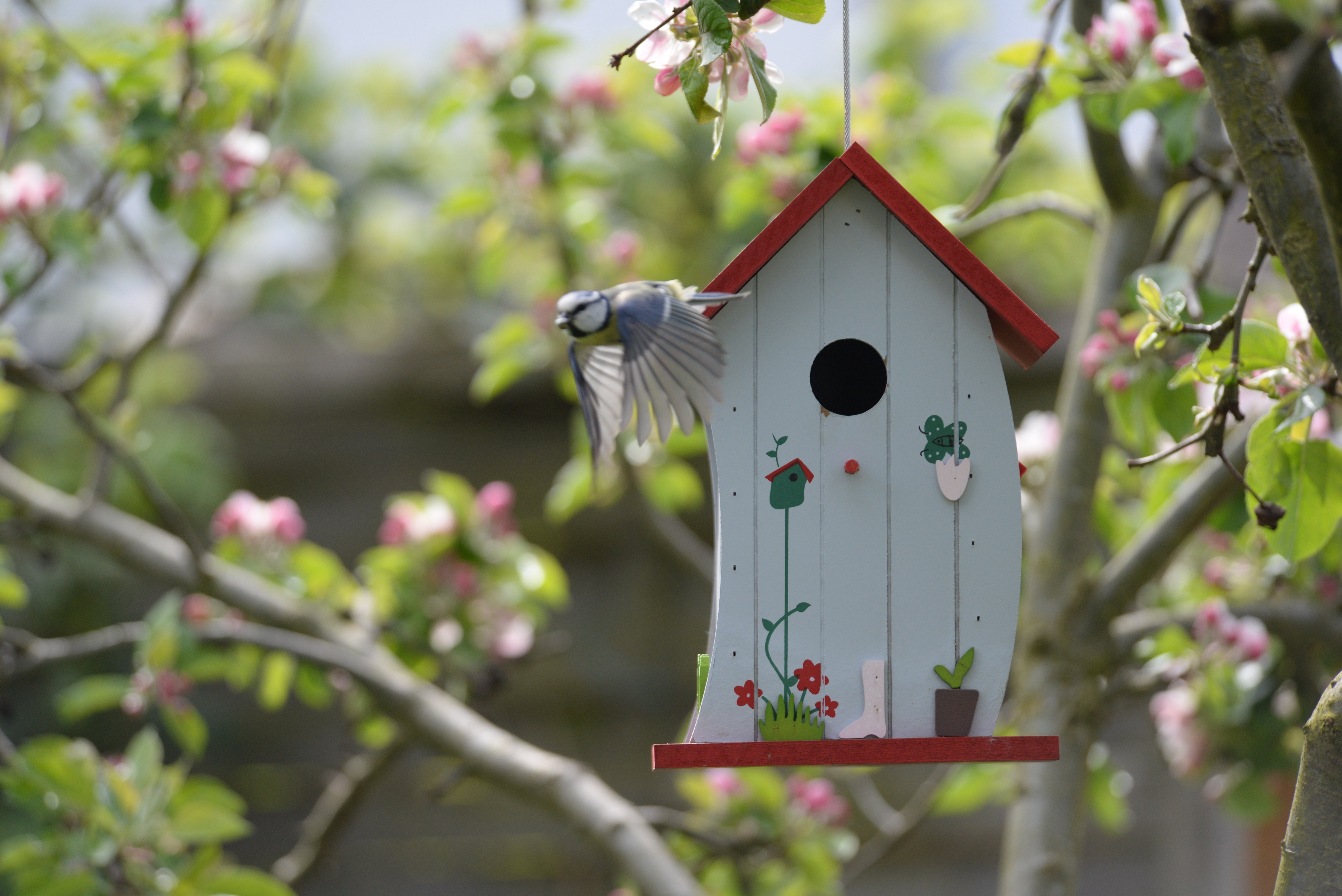Nest boxes – what do you need to know?
If you want to support our songbirds during the breeding and rearing phase, installing a nest box is a good idea. However, there are a few important factors to take into consideration.

Birds depend on us for help
For most songbirds, the breeding and rearing phase starts from mid-March, but it is becoming increasingly difficult for them to find natural nesting sites. These birds have become more and more dependent on our help, because not only is the number of old trees declining, the birds also have fewer breeding opportunities due to the smooth and modern construction of houses.
The best material
When it comes to nest boxes, appearance does not play an important role, it is the quality that has to be right. They should be stable with thick walls and must be able to be hung securely. If possible, avoid plastic and metal as these materials do not breathe. This can cause moisture to form on the inside and the nests can become mouldy. These materials furthermore offer hardly any isolation, which means that the boxes cool down considerably at night and become heated up on hot days. Softwood is recommended, but boxes made of other natural materials such as wood cement or terracotta are also suitable.
Shapes and sizes
Birds vary in size and have specific preferences. Many indigenous songbirds feel comfortable in nesting boxes with an entry hole of around 3 centimeters in diameter. Sparrows, for example, are very sociable animals and like to move into multi-unit nests, preferably a terraced sparrow house. Semi-hollow breeders such as the wren and the blackbird, on the other hand, naturally breed in cavities and in niches in walls. These birds therefore prefer half-open nesting boxes without an entrance hole.

At the right time…
Nest boxes can be left hanging all year round, but should be hung no later than March. If they are set up before the breeding season, the likelihood that they will be occupied in the following spring increases, as birds start looking for suitable nesting sites the previous year. These spaces are furthermore not only suitable for breeding, birds, small animals and insects also use the boxes for wintering and sleeping.
…at the right place
The nest box should be hung up in such a way that it is sheltered from the weather to protect the wood and the animals living in it. It helps to hang the box slightly tilted forward, so that it cannot rain in. If possible, the direction it faces should also be taken into account: the nest box should ideally be hung facing east or south-east. Facing north makes it too shady and when facing south, the south the nesting aid may not be exposed to direct sunlight. It is best to place the nesting box at a height of 2.5 meters or more so that it is not possible for enemies to climb up to it. Perches at the entrance hole are more dangerous than useful – nest robbers can hold on to them and get their prey more easily. If you hang several nesting boxes, they should be at least 3 meters apart.
Cleaning is important.
Nest boxes should be cleaned regularly. With bird species that breed several times a year, such as tits and starlings, do not clean the box until the last breeding phase is complete. If there are no birds living in the nest box, remove the contents and dispose of it. Either brush out the remains or rinse the nest box with water if there is a serious parasite infestation, but do not use any chemical cleaners. For most birds, the breeding season is over by the end of September.

